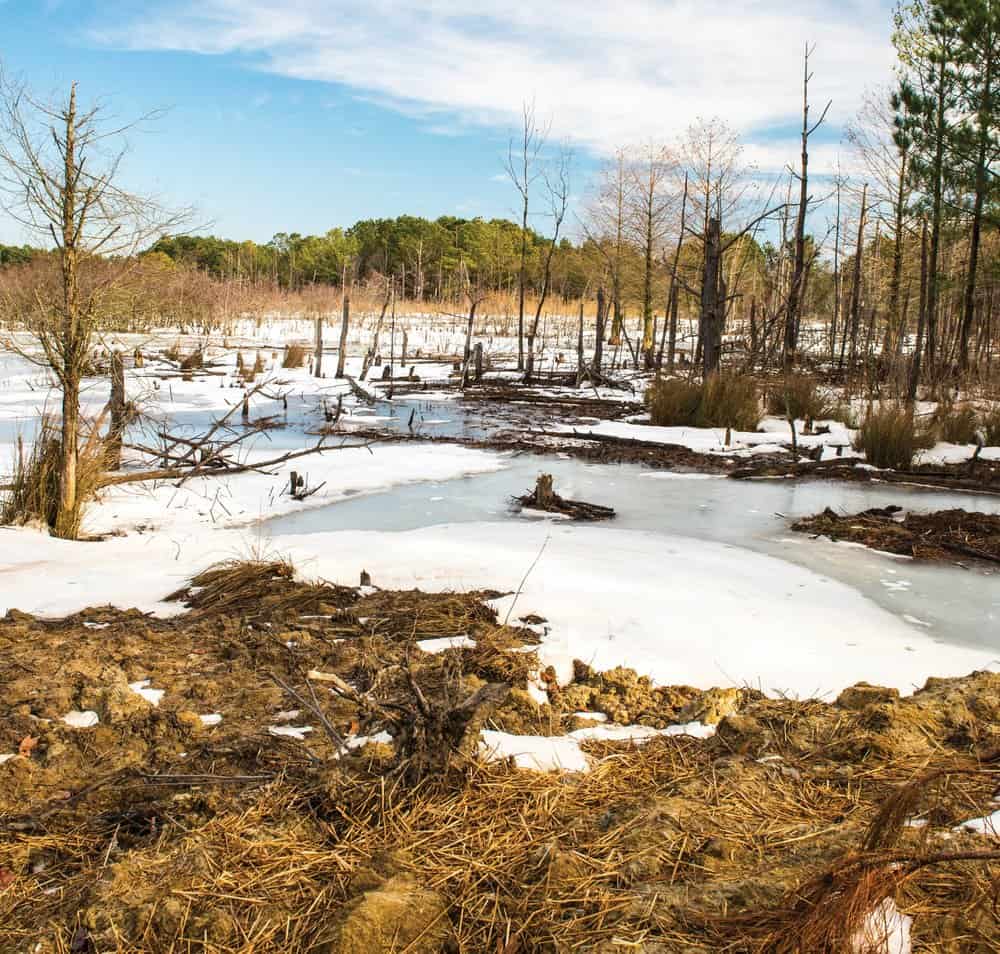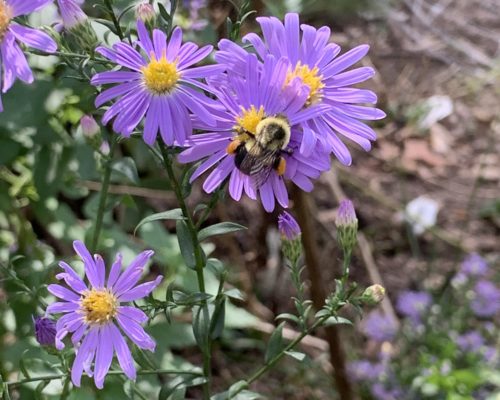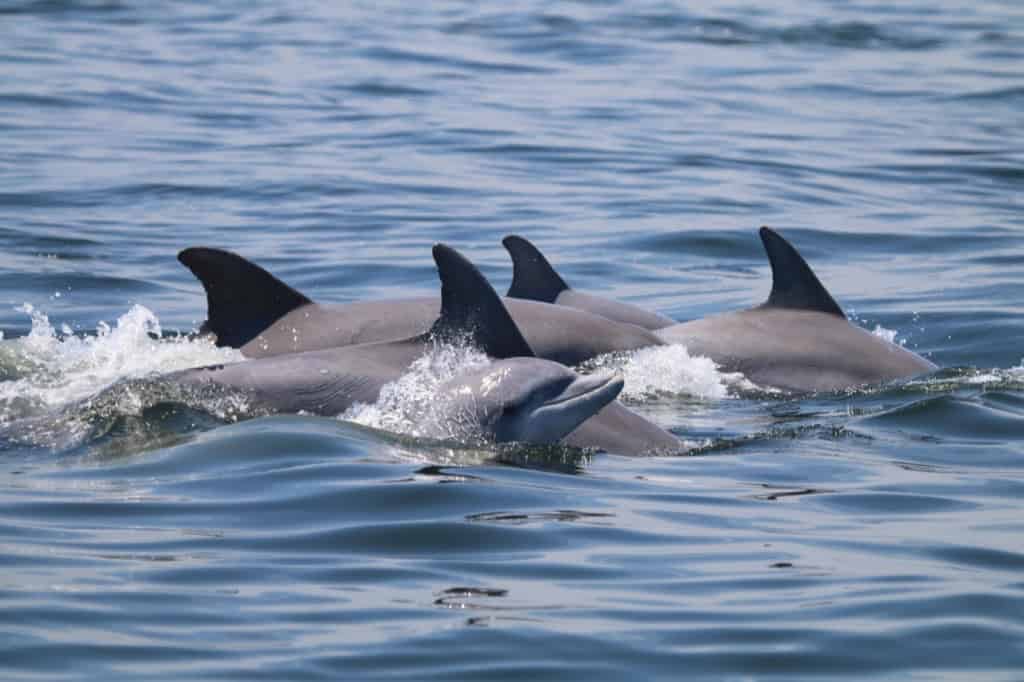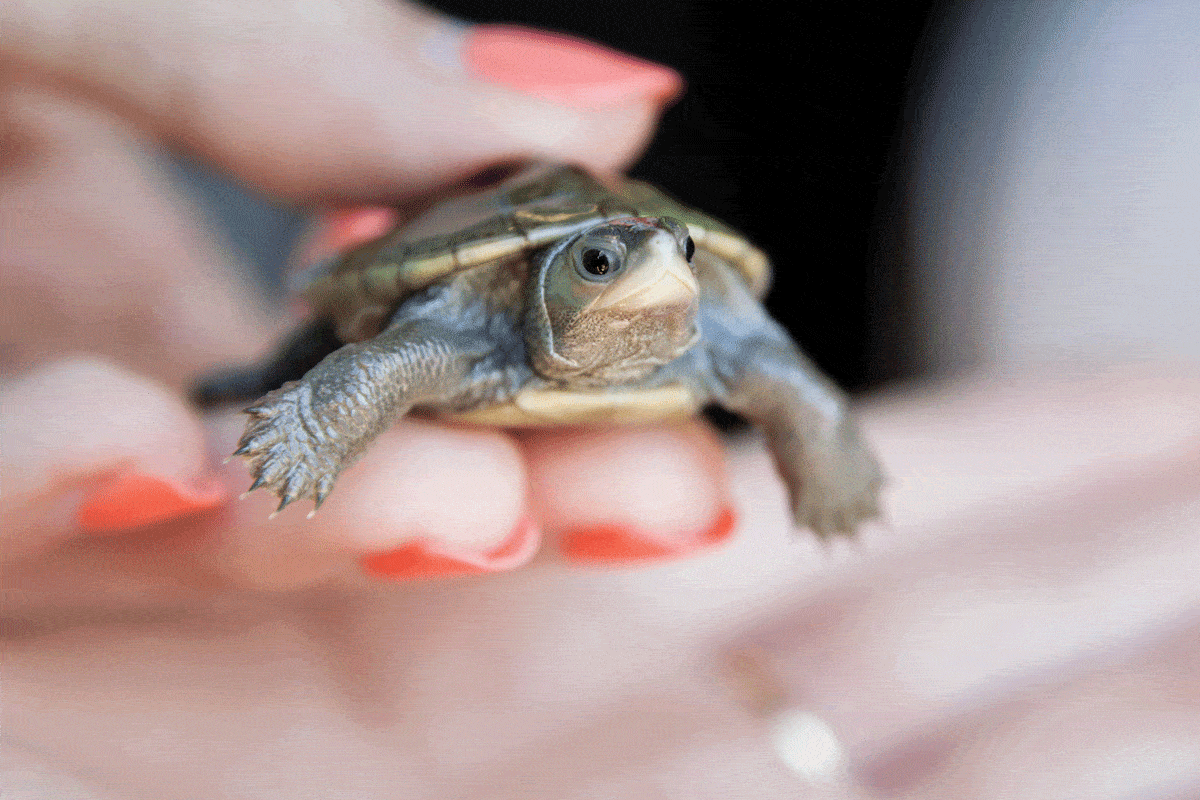Chesapeake Wildlife Heritage and the inimitable Ned Gerber provide a course for Bay redemption.
By Marty LeGrand
To an outsider, this large farm blanketing a jagged peninsula on southeastern Kent Island looks a little unkempt. Tangles of dead brush flank the gravel lane. Tree stumps and fallen branches litter an icy pond. A well-rusted disc plow hides in a field while rows of cornstalks, now withered and brown, stand tall under a January sky. And you wouldn’t know that beautiful Prospect Bay surrounds much of the property because stands of trees mostly block the view.
But to its manager, Ned Gerber, Barnstable Hill Farm is looking pretty shipshape—much like the place its owners and his employer, Chesapeake Wildlife Heritage (CWH), envisioned when the nonprofit took over the donated farm 18 years ago and created the mid-Shore’s largest privately managed wildlife refuge. At various seasons, the still-working farm’s 540 acres welcome ducks, geese, shore birds, bald eagles, ospreys, songbirds, deer, bees, butterflies, dragonflies, box turtles, beavers and other critters in habitats created and managed specifically for their needs.
More to the point of Chesapeake Wildlife Heritage’s mission, the farm is a best-practices model for other landowners who choose to accept the nonprofit’s help in making their properties more hospitable to wildlife and less harmful to the Chesapeake Bay. Every untidy brush pile, intentionally unplowed cornfield, uncut woods, restored wetland and planted grass buffer at Barnstable Hill Farm is a lesson plan not only in sustaining birds and beasts, but in preventing soil erosion and reducing agricultural runoff.
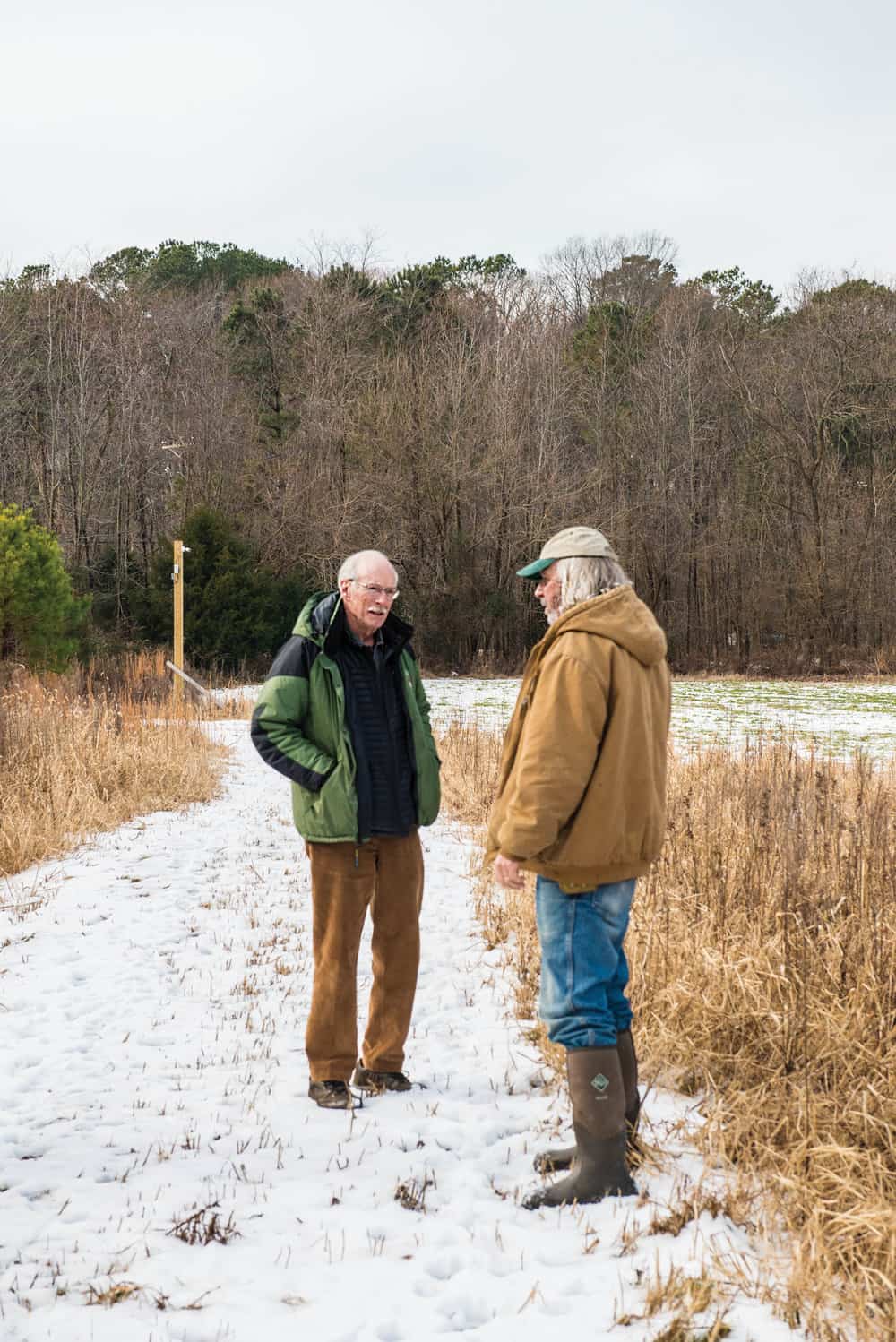
Founded in 1980 by a coalition of conservationists and hunters, CWH now owns and manages six wildlife refuges totaling 1,150 acres on Maryland’s Eastern Shore, Barnstable Hill Farm being the largest. The group conserves another 2,500 acres of agricultural land in Maryland by working with landowners who’ve enrolled in the Conservation Reserve Enhancement Program (CREP), a federal-state initiative that pays them to take environmentally sensitive acreage out of farming by restoring wetlands and planting buffers of trees, shrubs and grasses that host wildlife and reduce the amount of nitrogen, phosphorus and sediments flowing into nearby waterways.
Yet, in spite of that potent enticement, by which landowners generally reap far more from the government than they can earn by farming the acreage, participation has become a tough sell. Some landowners balk at the program’s 15-year commitment. Some don’t want to be burdened with maintaining improvements. Others simply adhere to a fiercely independent culture.
Sometimes it takes an iron-willed, opinionated, farm-raised, lifelong outdoorsman to make the pitch. That’s where CWH Director John E. “Ned” Gerber earns his keep. In addition to overseeing CWH’s administrative operations, based at Barnstable Hill Farm, Gerber works in the field, lobbying landowners to enroll in CREP as part of the nonprofit’s Chesapeake Care program. Once the landowners are on board, the group helps them apply for federal and state CREP monies to create or improve wildlife habitat through environmental projects that CWH designs, develops and maintains on the landowners’ behalf.
Gerber, a wildlife biologist with degrees in ecology from Cornell and Johns Hopkins universities, has worked for the organization since 1983. He hails from northern Baltimore County, where he grew up on a farm near Hereford. Farming remains in his blood, although with his graying, nearly shoulder-length hair and stubbly beard he would look equally at home on the set of a wilderness survival TV show. He’s a devoted duck hunter with a passion for wildlife, wetlands and healing Chesapeake Bay. (His JHU master’s thesis analyzed the effects of lead poisoning from buckshot on black ducks.)
Over coffee in the gas stove-warmed office at Barnstable Hill Farm, Gerber explains CWH’s mission and the challenges of persuading landowners, especially his own demographic, to engage with the government and change lifelong habits and farming methods.
“Old white guys are the worst,” he says, laughing. “We don’t even do the easy stuff,” like switching from lead bullets and fishing weights to non-toxic alternatives. But Gerber is the first to defend fellow hunters’ commitment to restore waterfowl habitat, an important component of the nonprofit’s work. CWH’s five-member board of directors includes three hunters, one hunting opponent and one “who’s on the fence,” Gerber says.
Gerber’s thoughts on wildlife, habitat preservation, green farming practices, bureaucracies, politicians and stubborn old white guys spill out in a fast-flowing stream of consciousness, beginning with the virtual disappearance of wild northern bobwhite quail from the mid-Atlantic. Scientists cite loss of habitat as the prime cause for the game birds’ precipitous decline and they’re trying to foster a comeback in New Jersey by re-introducing wild quail in the Pine Barrens. Gerber says a blizzard wiped out Barnstable Hill Farm’s few remaining coveys eight years ago. He decries the role of agricultural practices—“clean” farms planted right up to the road—that removed the Delmarva Peninsula’s grasslands and woody thickets, which provide cover for quail and other field-bird species.
CWH is doing its part to restore scrub shrub land and grasses. Over the years, the nonprofit has restored more than 150 acres of wildlife habitat at Barnstable Hill Farm and farms about 150 acres using sustainable practices and bird-friendly buffer strips intended to curb runoff into two adjacent Chesapeake tributaries, Prospect Bay and Kirwan Creek. Mature woodlands comprise about 20 percent of the farm’s acreage, with another 120 acres preserved as tidal salt marsh. The entire farm is preserved forever through an easement.
CWH partners with a variety of landowners in two states, but most of its work focuses on the Maryland Eastern Shore counties of Kent, Queen Anne’s, Talbot, Caroline and northern Dorchester, where the state’s largest farms are concentrated and where agriculture accounts for close to half of the nitrogen and phosphorus—twin accomplices in fostering the demise of underwater grasses and the suffocation of fish and shellfish—that seeps into the local watershed.
The group advocates the creation of wetlands to trap and filter agricultural runoff, the planting of cover crops to keep soil and nutrients on farm fields and out of nearby waterways, and the use of planted buffers around cultivated fields. All its projects are designed with CWH’s primary constituents in mind—the creatures that will inhabit them. Shallow emergent wetlands provide habitat for ducks, geese, shorebirds, dragonflies and amphibians, while grass and wildflower meadows host pollinators and songbirds.
Gerber credits government CREP payments with making it happen. “That’s about the only tool I have to get land out of corn and soybeans into something else [more wildlife friendly],”
he says.
Administered by the U.S. Department of Agriculture (USDA), the parent program has been around since the Reagan administration. Basically, it encourages landowners not to farm or graze environmentally sensitive acreage by offering them annual rental payments and cost sharing to convert the land into grasses, wetlands and riparian forest buffers.
USDA sweetened the deal in 1997, launching the feds’ first state partnership (CREP) with Maryland, where farmers are not only offered annual rental money but incentive bonuses and enhanced cost sharing when they conserve marginal land located near Chesapeake Bay and its tributaries. Initially, the program was a success, enrolling more than 70 percent of its targeted 100,000 acres and exceeding its goal of planting 2,010 acres of riparian buffers—the most effective nutrient filter—by 2010. But Congressional delays and state cutbacks slowed the program’s progress, the most enthusiastic landowners signed up early and CREP has never achieved the same enrollment levels again despite its payoff potential.
An Eastern Shore farmer who agrees to convert 15 acres into a restored wetland, according to CREP guidelines, will receive $405 per acre or $6,075 annually. Over the term of a 15-year contract that amounts to $91,125.
Such monetary incentives were enough to convince Stanley Watkins, an Anne Arundel County oncologist, to enroll a portion of his nearly 200-acre farm near Rock Hall in CREP. Under a previous owner, Gerber and CWH had already improved the property, which drains into two Chester River tributaries, by creating 26 acres of waterfowl habitat and planting native grass buffers. The group has since installed nesting boxes for wood ducks and purple martins and continues to maintain the projects, leaving Watkins free to grow corn and wheat on about 100 tillable acres while collecting CREP payments on protected acreage.
“Economically it was a dramatic success, It’s absolutely a no-brainer to me,” he says. “If I could, I’d have the whole blooming thing in CREP. Now I’m hoping to break even and feed the critte rs.” So impressed was Watkins, a duck hunter and fisherman, that he currently serves on CWH’s board of directors.
CREP is administered by an alphabet soup of federal and state agencies and the program’s payments are based on calculations that factor in soil types, the method of conservation, who’s writing the checks, and other considerations. Fortunately, landowners can get help in enrolling from the agencies themselves, local soil conservation districts, and land conservancy groups such as CWH.
Gerber tells his clients: “Here’s my cell phone number. Call me anytime.” Sometimes the landowner simply hands over the phone so Gerber can straight-talk with the bureaucrat at hand.
With prospective new CREP enrollees in shorter supply, Gerber beats the bushes for potential clients, including mailing letters to new land purchasers. When he gets a nibble, he’s characteristically blunt. “I’m not coming out here to play around,” he tells the landowner. “We’re going to do something important for wildlife if we can.”
One of his most effective sales tools is a visit to Barnstable Hill Farm. On a sunny winter day with Watkins and two visitors in tow, Gerber offers a tour. We begin with the farm’s latest addition, an intentionally flooded cornfield where wintering ducks can swim and feed on high-energy standing corn. Completed in 2017, the Charlie Smith Habitat Project memorializes an avid local outdoorsman whose family and friends funded its creation.
Walking through the slushy leftovers of a coastal snowstorm, Gerber and Watkins are pleased to see flocks of wood ducks dropping into the impoundment; the birds have usually flown to the Carolinas by now. Along the way, Gerber stops to point out wildlife-supporting plants like buttonbush, wild millet, fall panicum, tickseed, and pickerelweed in restored wetlands. Wildlife provide the background chorus; white-throated sparrows chatter in hedgerows and a flock of Canada geese arises noisily from a field.
When Gerber visits prospective CREP sites, he likes to use the owners’ wildlife preferences—the sound of a particular songbird’s call, perhaps, or the presence of migrating ducks—to peak their interest. “Once I sell the owners on the small stuff, I can work on larger things,” he says.
He and other CWH staff members preach careful conservation practices: Plant grass buffer strips and don’t mow the strips until March so wildflowers and insect larvae can survive and feed overwintering birds; limit or eliminate the use of harmful insecticides on corn crops to help the native bee population.
Sometimes the best land management practice is letting nature take its course. Gerber stops by a beaver pond, one of eight on the farm, which used to have none. “We have no idea how the beaver got here, but we’re glad they’re here,” he says. In addition to creating ponds, the buck-toothed animals perform landscaping that otherwise would be done by staff, like gnawing down invasive trees. CWH uses branches from felled trees to make brush piles that attract pollinators and other birds.
CREP hasn’t always found favor with Maryland’s agriculture authorities, Gerber claims. “They want to see a crop. With crops, the farmer gets the money. With CREP, the landowner gets the money.”
Many farm owners still don’t cotton to the program either. “They don’t like the look of a farm with grass and shrub buffers and they don’t like being told what to do,” Gerber says. Only specified conservation practices are allowed under CREP, landowners are told which cover vegetation is permitted and they must maintain (mow, de-weed) all farmscape alterations.
To be eligible for CREP funds, the land must have been recently farmed and only landowners can apply for the money. With tenant-farmed property it’s up to property owner and farmer to divvy up the government checks, a sore spot with many farmers who maintain CREP’s monetary incentives are too enticingly high, depriving them of income-producing acreage. That’s why Gerber encourages landowners to be generous with their farmer tenants.
Our Barnstable Hill Farm tour ends near a songbird-attracting meadow of indiangrass and broomsedge, where the patchy snow is pockmarked with deer tracks. As a red-tailed hawk cries overhead, Gerber tells the story of his most hard-earned conservation project. After repeated attempts to enroll a wealthy local landowner ultimately failed, Gerber got a call from one of the man’s heirs 25 years later. Was the farm still eligible for CREP, the heir wondered? By then, the property had been handed down several times and divided into trusts owned by more than two dozen people. It took a while to iron out the details, but eventually the land was conserved. For Gerber, it was a long, hard-fought victory. “I call it combat ecology,” he laughs.

